- Home
- Nathaniel Hawthorne
The Marble Faun; Or, The Romance of Monte Beni - Volume 1
The Marble Faun; Or, The Romance of Monte Beni - Volume 1 Read online
Produced by Michael Pullen and David Widger
THE MARBLE FAUN
or The Romance of Monte Beni
By Nathaniel Hawthorne
In Two Volumes
This is Volume One
Contents
Volume I
I MIRIAM, HILDA, KENYON, DONATELLO II THE FAUN III SUBTERRANEAN REMINISCENCES IV THE SPECTRE OF THE CATACOMB V MIRIAM'S STUDIO VI THE VIRGIN'S SHRINE VII BEATRICE VIII THE SUBURBAN VILLA IX THE FAUN AND NYMPH X THE SYLVAN DANCE XI FRAGMENTARY SENTENCES XII A STROLL ON THE PINCIAN XIII A SCULPTOR'S STUDIO XIV CLEOPATRA XV AN AESTHETIC COMPANY XVI A MOONLIGHT RAMBLE XVII MIRIAM'S TROUBLE XVIII ON THE EDGE OF A PRECIPICE XIX THE FAUN'S TRANSFORMATION XX THE BURIAL CHANT XXI THE DEAD CAPUCHIN XXII THE MEDICI GARDENS XXIII MIRIAM AND HILDA
Volume II
XXIV THE TOWER AMONG THE APENNINES XXV SUNSHINE XXVI THE PEDIGREE OF MONTE BENI XXVII MYTHS XXVIII THE OWL TOWER XXIX ON THE BATTLEMENTS XXX DONATELLO'S BUST XXXI THE MARBLE SALOON XXXII SCENES BY THE WAY XXXIII PICTURED WINDOWS XXXIV MARKET-DAY IN PERUGIA XXXV THE BRONZE PONTIFF'S BENEDICTION XXXVI HILDA'S TOWER XXXVII THE EMPTINESS OF PICTURE GALLERIES XXXVIII ALTARS AND INCENSE XXXIX THE WORLD'S CATHEDRAL XL HILDA AND A FRIEND XLI SNOWDROPS AND MAIDENLY DELIGHTS XLII REMINISCENCES OF MIRIAM XLIII THE EXTINCTION OF A LAMP XLIV THE DESERTED SHRINE XLV THE FLIGHT OF HILDA'S DOVES XLVI A WALK ON THE CAMPAGNA XLVII THE PEASANT AND CONTADINA XLVIII A SCENE IN THE CORSO XLIX A FROLIC OF THE CARNIVAL L MIRIAM, HILDA, KENYON, DONATELLO
THE MARBLE FAUN
Volume I
CHAPTER I
MIRIAM, HILDA, KENYON, DONATELLO
Four individuals, in whose fortunes we should be glad to interestthe reader, happened to be standing in one of the saloons of thesculpture-gallery in the Capitol at Rome. It was that room (the first,after ascending the staircase) in the centre of which reclines the nobleand most pathetic figure of the Dying Gladiator, just sinking into hisdeath-swoon. Around the walls stand the Antinous, the Amazon, the LycianApollo, the Juno; all famous productions of antique sculpture, and stillshining in the undiminished majesty and beauty of their ideal life,although the marble that embodies them is yellow with time, and perhapscorroded by the damp earth in which they lay buried for centuries. Here,likewise, is seen a symbol (as apt at this moment as it was two thousandyears ago) of the Human Soul, with its choice of Innocence or Evil closeat hand, in the pretty figure of a child, clasping a dove to her bosom,but assaulted by a snake.
From one of the windows of this saloon, we may see a flight of broadstone steps, descending alongside the antique and massive foundation ofthe Capitol, towards the battered triumphal arch of Septimius Severus,right below. Farther on, the eye skirts along the edge of the desolateForum (where Roman washerwomen hang out their linen to the sun), passingover a shapeless confusion of modern edifices, piled rudely up withancient brick and stone, and over the domes of Christian churches,built on the old pavements of heathen temples, and supported by the verypillars that once upheld them. At a distance beyond--yet but a littleway, considering how much history is heaped into the interveningspace--rises the great sweep of the Coliseum, with the blue skybrightening through its upper tier of arches. Far off, the view is shutin by the Alban Mountains, looking just the same, amid all this decayand change, as when Romulus gazed thitherward over his half finishedwall.
We glance hastily at these things,--at this bright sky, and thoseblue distant mountains, and at the ruins, Etruscan, Roman, Christian,venerable with a threefold antiquity, and at the company of world-famousstatues in the saloon,--in the hope of putting the reader into thatstate of feeling which is experienced oftenest at Rome. It is a vaguesense of ponderous remembrances; a perception of such weight and densityin a bygone life, of which this spot was the centre, that the presentmoment is pressed down or crowded out, and our individual affairs andinterests are but half as real here as elsewhere. Viewed through thismedium, our narrative--into which are woven some airy and unsubstantialthreads, intermixed with others, twisted out of the commonest stuff ofhuman existence--may seem not widely different from the texture of allour lives.
Side by side with the massiveness of the Roman Past, all matters that wehandle or dream of nowadays look evanescent and visionary alike.
It might be that the four persons whom we are seeking to introduce wereconscious of this dreamy character of the present, as compared with thesquare blocks of granite wherewith the Romans built their lives. Perhapsit even contributed to the fanciful merriment which was just now theirmood. When we find ourselves fading into shadows and unrealities, itseems hardly worth while to be sad, but rather to laugh as gayly as wemay, and ask little reason wherefore.
Of these four friends of ours, three were artists, or connected withart; and, at this moment, they had been simultaneously struck by aresemblance between one of the antique statues, a well-known masterpieceof Grecian sculpture, and a young Italian, the fourth member of theirparty.
"You must needs confess, Kenyon," said a dark-eyed young woman, whomher friends called Miriam, "that you never chiselled out of marble, norwrought in clay, a more vivid likeness than this, cunning a bust-makeras you think yourself. The portraiture is perfect in character,sentiment, and feature. If it were a picture, the resemblance might behalf illusive and imaginary; but here, in this Pentelic marble, it is asubstantial fact, and may be tested by absolute touch and measurement.Our friend Donatello is the very Faun of Praxiteles. Is it not true,Hilda?"
"Not quite--almost--yes, I really think so," replied Hilda, a slender,brown-haired, New England girl, whose perceptions of form and expressionwere wonderfully clear and delicate. "If there is any difference betweenthe two faces, the reason may be, I suppose, that the Faun dwelt inwoods and fields, and consorted with his like; whereas Donatello hasknown cities a little, and such people as ourselves. But the resemblanceis very close, and very strange."
"Not so strange," whispered Miriam mischievously; "for no Faun inArcadia was ever a greater simpleton than Donatello. He has hardly aman's share of wit, small as that may be. It is a pity there are nolonger any of this congenial race of rustic creatures for our friend toconsort with!"
"Hush, naughty one!" returned Hilda. "You are very ungrateful, for youwell know he has wit enough to worship you, at all events."
"Then the greater fool he!" said Miriam so bitterly that Hilda's quieteyes were somewhat startled.
"Donatello, my dear friend," said Kenyon, in Italian, "pray gratify usall by taking the exact attitude of this statue."
The young man laughed, and threw himself into the position in whichthe statue has been standing for two or three thousand years. In truth,allowing for the difference of costume, and if a lion's skin could havebeen substituted for his modern talma, and a rustic pipe for his stick,Donatello might have figured perfectly as the marble Faun, miraculouslysoftened into flesh and blood.
"Yes; the resemblance is wonderful," observed Kenyon, after examiningthe marble and the man with the accuracy of a sculptor's eye. "Thereis one point, however, or, rather, two points, in respect to which ourfriend Donatello's abundant curls will not permit us to say whether thelikeness is carried into minute detail."
And the sculptor directed the attention of the party to the ears of thebeautiful statue which they were contemplating.
>
But we must do more than merely refer to this exquisite work of art; itmust be described, however inadequate may be the effort to express itsmagic peculiarity in words.
The Faun is the marble image of a young man, leaning his right arm onthe trunk or stump of a tree; one hand hangs carelessly by his side;in the other he holds the fragment of a pipe, or some such sylvaninstrument of music. His only garment--a lion's skin, with the clawsupon his shoulder--falls halfway down his back, leaving the limbsand entire front of the figure nude. The form, thus displayed, ismarvellously graceful, but has a fuller and more rounded outline, moreflesh, and less of heroic muscle, than the old sculptors were wont toassign to their types of masculine beauty. The character of the facecorresponds with the figure; it is most agreeable in outline andfeature, but rounded and somewhat voluptuously developed, especiallyabout the throat and chin; the nose is almost straight, but veryslightly curves inward, thereby acquiring an indescribable charm ofgeniality and humor. The mouth, with its full yet delicate lips, seemsso nearly to smile outright, that it calls forth a responsive smile. Thewhole statue--unlike anything else that ever was wrought in that severematerial of marble--conveys the idea of an amiable and sensual creature,easy, mirthful, apt for jollity, yet not incapable of being touchedby pathos. It is impossible to gaze long at this stone image withoutconceiving a kindly sentiment towards it, as if its substance were warmto the touch, and imbued with actual life. It comes very close to someof our pleasantest sympathies.
Perhaps it is the very lack of moral severity, of any high and heroicingredient in the character of the Faun, that makes it so delightful anobject to the human eye and to the frailty of the human heart. The beinghere represented is endowed with no principle of virtue, and would beincapable of comprehending such; but he would be true and honest by dintof his simplicity. We should expect from him no sacrifice or effort foran abstract cause; there is not an atom of martyr's stuff in all thatsoftened marble; but he has a capacity for strong and warm attachment,and might act devotedly through its impulse, and even die for it atneed. It is possible, too, that the Faun might be educated through themedium of his emotions, so that the coarser animal portion of his naturemight eventually be thrown into the background, though never utterlyexpelled.
The animal nature, indeed, is a most essential part of the Faun'scomposition for the characteristics of the brute creation meet andcombine with those of humanity in this strange yet true and naturalconception of antique poetry and art. Praxiteles has subtly diffusedthroughout his work that mute mystery, which so hopelessly perplexes uswhenever we attempt to gain an intellectual or sympathetic knowledge ofthe lower orders of creation. The riddle is indicated, however, only bytwo definite signs: these are the two ears of the Faun, which are leafshaped, terminating in little peaks, like those of some species ofanimals. Though not so seen in the marble, they are probably to beconsidered as clothed in fine, downy fur. In the coarser representationsof this class of mythological creatures, there is another token of brutekindred,--a certain caudal appendage; which, if the Faun of Praxitelesmust be supposed to possess it at all, is hidden by the lion's skin thatforms his garment. The pointed and furry ears, therefore, are the soleindications of his wild, forest nature.
Only a sculptor of the finest imagination, the most delicate taste, thesweetest feeling, and the rarest artistic skill--in a word, a sculptorand a poet too--could have first dreamed of a Faun in this guise, andthen have succeeded in imprisoning the sportive and frisky thing inmarble. Neither man nor animal, and yet no monster, but a being in whomboth races meet on friendly ground. The idea grows coarse as we handleit, and hardens in our grasp. But, if the spectator broods long overthe statue, he will be conscious of its spell; all the pleasantness ofsylvan life, all the genial and happy characteristics of creatures thatdwell in woods and fields, will seem to be mingled and kneaded into onesubstance, along with the kindred qualities in the human soul. Trees,grass, flowers, woodland streamlets, cattle, deer, and unsophisticatedman. The essence of all these was compressed long ago, and still exists,within that discolored marble surface of the Faun of Praxiteles.
And, after all, the idea may have been no dream, but rather a poet'sreminiscence of a period when man's affinity with nature was morestrict, and his fellowship with every living thing more intimate anddear.

 The Scarlet Letter
The Scarlet Letter Young Goodman Brown : By Nathaniel Hawthorne - Illustrated
Young Goodman Brown : By Nathaniel Hawthorne - Illustrated The Birthmark
The Birthmark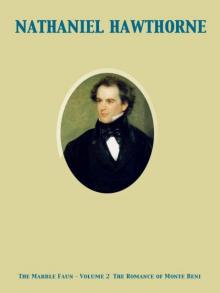 The Marble Faun; Or, The Romance of Monte Beni - Volume 1
The Marble Faun; Or, The Romance of Monte Beni - Volume 1 The Minister's Black Veil
The Minister's Black Veil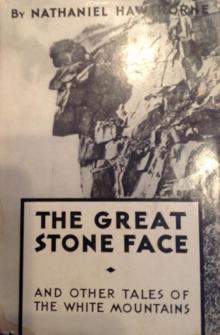 The Great Stone Face, and Other Tales of the White Mountains
The Great Stone Face, and Other Tales of the White Mountains The House of the Seven Gables
The House of the Seven Gables The Snow Image
The Snow Image The Blithedale Romance
The Blithedale Romance Rappaccini's Daughter: By Nathaniel Hawthorne - Illustrated
Rappaccini's Daughter: By Nathaniel Hawthorne - Illustrated Twice-Told Tales
Twice-Told Tales Twice Told Tales
Twice Told Tales The Marble Faun; Or, The Romance of Monte Beni - Volume 2
The Marble Faun; Or, The Romance of Monte Beni - Volume 2_preview.jpg) Footprints on the Sea-Shore (From Twice Told Tales)
Footprints on the Sea-Shore (From Twice Told Tales) Main Street
Main Street_preview.jpg) The Seven Vagabonds (From Twice Told Tales)
The Seven Vagabonds (From Twice Told Tales) Fanshawe
Fanshawe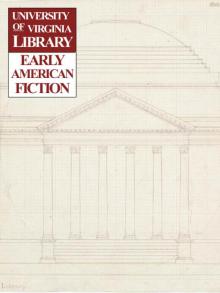 Chippings with a Chisel
Chippings with a Chisel Selected Tales and Sketches
Selected Tales and Sketches Young Goodman Brown
Young Goodman Brown Roger Malvin's Burial
Roger Malvin's Burial The Prophetic Pictures
The Prophetic Pictures The Village Uncle
The Village Uncle Scarlet Letter (Barnes & Noble Classics Series)
Scarlet Letter (Barnes & Noble Classics Series) The Procession of Life
The Procession of Life Drowne's Wooden Image
Drowne's Wooden Image Hawthorne's Short Stories
Hawthorne's Short Stories My Kinsman, Major Molineux
My Kinsman, Major Molineux Legends of the Province House
Legends of the Province House Foot-Prints on the Sea-Shore
Foot-Prints on the Sea-Shore The Haunted Quack
The Haunted Quack Tanglewood Tales
Tanglewood Tales The Seven Vagabonds
The Seven Vagabonds Mosses from an Old Manse, Volume 2
Mosses from an Old Manse, Volume 2 The Canterbury Pilgrims
The Canterbury Pilgrims Wakefield
Wakefield The Gray Champion
The Gray Champion The White Old Maid
The White Old Maid The Snow-Image: A Childish Miracle
The Snow-Image: A Childish Miracle The Gentle Boy
The Gentle Boy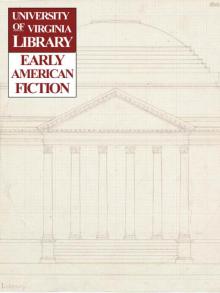 Mr. Higginbotham's Catastrophe
Mr. Higginbotham's Catastrophe![The Threefold Destiny: A Fairy Legend, by Ashley Allen Royce [pseud.] Read online](http://i1.bookreadfree.com/i2/04/10/the_threefold_destiny_a_fairy_legend_by_ashley_allen_royce_pseud__preview.jpg) The Threefold Destiny: A Fairy Legend, by Ashley Allen Royce [pseud.]
The Threefold Destiny: A Fairy Legend, by Ashley Allen Royce [pseud.] Lady Eleanore`s Mantle
Lady Eleanore`s Mantle The Great Carbuncle
The Great Carbuncle The Portable Hawthorne (Penguin Classics)
The Portable Hawthorne (Penguin Classics)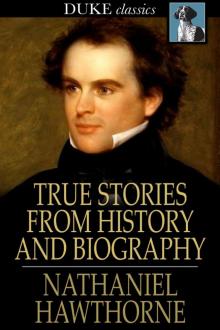 True Stories from History and Biography
True Stories from History and Biography